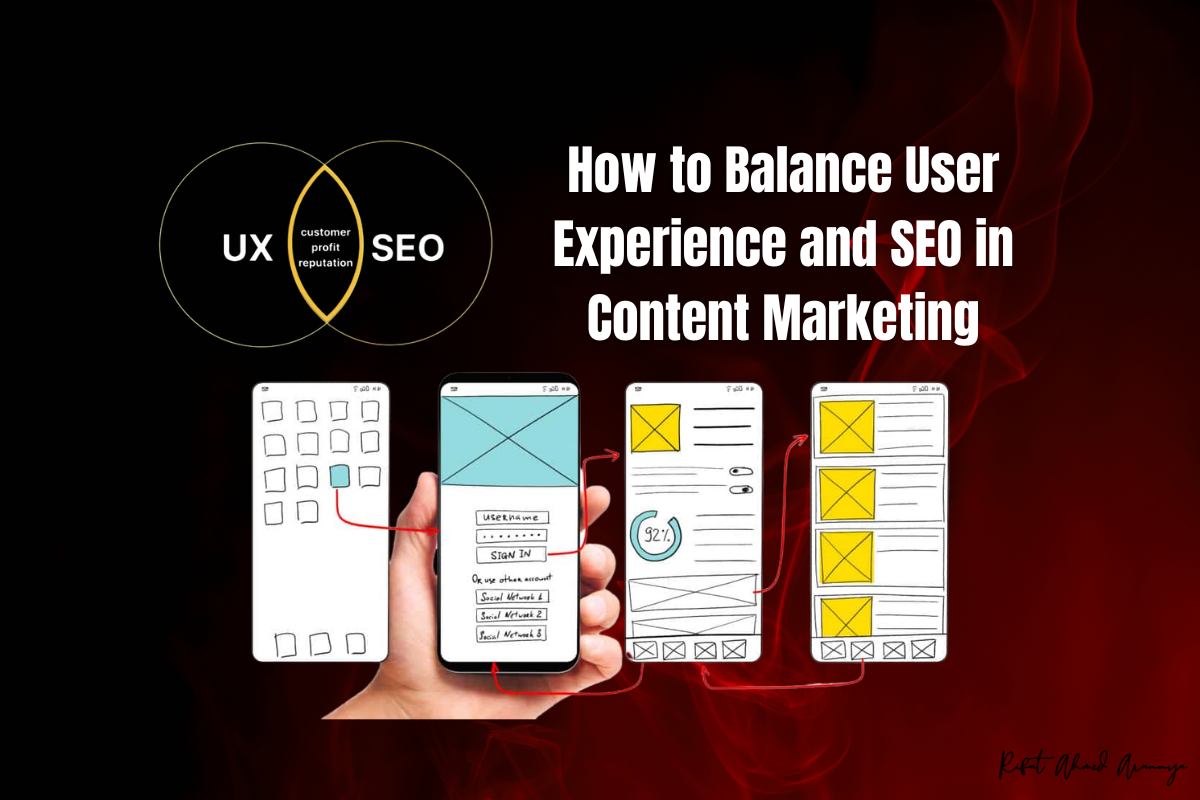Is creating content that satisfies both Google and readers a possibility? Many marketers are caught up in the struggle between user experience and SEO.
Today’s war between search engine optimization and user-focused strategies isn’t optional; it’s critical if you wish to enhance content visibility or increase user engagement.
Focusing exclusively on users results in neglecting essential algorithms. Meanwhile, prioritizing algorithms will strip away creativity and make content dull and robotic.
In this post, we will address the best practical approaches for combining select keyword-focused content with user-experience-optimized material so that content appeases both Google bots and human visitors.
1. Core Principles of User Experience and SEO
Users often experience and interact with SEO as something entirely different from UX; however, both share a primary goal. Both fundamental branches strive to convey information as effectively and efficiently as possible.
SEO works on ensuring visibility on search engines through keywords, backlinks, and structured data. User experience, in turn, focuses on clarity, ease of use, and the emotional response it evokes. The two, however, are much better together.
For example, pages that load quickly enhance user experience (UX) and reduce bounce rate (SEO). Congruent content organized with headers aids reading and also crawling. Picture SEO as bringing traffic to the site and UX as the engagement that makes them linger. Comprehending their common ground is the first step toward merging them.
2. Start with User Intent: The Foundation of Balance
Understanding user intent for a topic is critical and time-consuming, but search engines are already heavily focused on resolving it. Start by discovering what the audience truly seeks. Is it looking for solutions? Comparison? Could you provide general information?
Review queries with Google Analytics, Google Search Console, and other keyword research platforms. Tailor your content’s style and structure to those expectations.
If content writing fulfils a user’s intent, the visitor, search engine and UX goals are all satisfied. This approach ensures keyword relevance, requires minimum elbow grease, achieves utmost clarity, and maximum usefulness.
3. Craft Engaging and Structured Content
Content that follows a logical order is simpler to read and will rank better. Implement headers (H1, H2, H3), bullet points, and keep your paragraphs concise. This not only aids in scanning the text but also enables search engines to grasp the content’s context.
Internal references to related material are essential, accompanied by descriptive anchor texts. Use visuals, graphs, or videos that aid in comprehension and retention.
Enhancing formatting clarity and structure improves user experience, while proper on-page SEO contributes to improved ranks. In this manner, the structure serves as a link between UX and SEO.
4. Optimize Page Speed and Mobile Responsiveness
Your content will be useless if your website is slow, especially on mobile devices. Mobile friendliness and speed are crucial ranking criteria. Boost your speed by compressing images, removing unnecessary scripts, and implementing caching.
Design while keeping mobile as the primary focus: legible typefaces, tappable buttons, and intuitive navigation. Such devices enhance user experience and improve SEO. Enhancing technical performance improves self-accessibility regarding content.
5. Use Keywords Strategically, Not Excessively
Excessive use of keywords hinders both user experience and SEO – it’s an obsolete practice. Instead, focus on using keywords appropriately in titles, subheadings, and the main text. Also, use synonyms and long-tail forms to improve relevance.
Make sure to monitor keyword density with tools like Yoast and Surfer SEO. Prioritize the text’s readability and meaning. Keywords enhance content only when they are naturally woven into it.
An example would be placing the WooCommerce variable pricing plugin as a keyword which serves users searching for variable pricing flexibility.
6. Create High-Quality, Value-Driven Content
Rewarding valuable content, search engines show appreciation to users. Craft original, deep, and useful content devoid of fluff. Answer each question directly. Don’t skip out on relevant examples and trusted sources when citing. You can include FAQs, expert quotes, or even case studies for credibility.
Devoid of emotional connections; use storytelling where applicable. Keeping users engaged means boosting time on the webpage while broadening share potential and enhancing vital SEO indicators. It fosters trust and authority alongside user satisfaction. Content should seek to inform, educate, or entertain.
7. Enhance Engagement with Clear CTAs and Interactivity
User engagement is crucial. Have clear CTAs that help users move to the next step, whether it is reading another article, signing up, or purchasing a product. Include quizzes, polls, comments, and other interactive features. These helps make the experience personal and memorable.
From an SEO perspective, these features help decrease bounce rates and increase dwell time. While ensuring the visibility of CTAs, avoid making them too forceful. A well-balanced CTA should blend in with the content, enhancing rather than disrupting it.
8. Monitor Metrics and Adjust Strategies
Tools like Google Analytics, Hotjar, and Ahrefs allow you to track user behavior alongside search rankings. Focus on measuring engagement metrics like bounce rate, session duration, pages per visit, and keyword ranking. Identify the pages that perform well and examine them closely to understand their performance.
Use heatmaps to analyze click and drop-off areas. Refine content according to these insights. Improving UX and SEO can sometimes stem from small changes to headings or CTA positions. Keeping a consistent approach towards improvement helps achieve balance.
9. Keep Content Updated and Relevant
Every site’s reputation suffers when it contains outdated information with misinformation, low-quality content, and broken links. For every site, older posts should be reviewed and updated regularly. Sites should make changes in the facts presented, increase ease of understanding, and incorporate new relevant keywords or new media.
From the user’s perspective, they should know that the site’s information is reliable and up-to-date. This can also be achieved by changing blog formatting to infographics or videos. The primary aim should always be fulfilling needs while keeping your content ecosystem diverse.
10. Build Trust with Transparency and Authenticity
Trust within a site plays a major role in user experience. Clicking on shady links or click baits and unverified sources can risk a user’s cybersecurity. Users must be provided with an author bio, email, and a well-drafted privacy policy, along with policies ensuring easy navigation.
To mitigate these concerns, users should be assured of a seamless experience with safe browsing link HTTPS. All major search engines pick up signals of trust, be it backlinks, lower bounce rates, or low engagement metrics. Websites that offer genuine content portray low bounce rates along with loyal users, which eventually results in them promoting the site.
Conclusion
Achieving a balance between user experience and SEO in marketing content is not a question of prioritization. It is about finding a happy medium that fulfils both requirements. It is vital to observe user intent, maintain clarity, transform the page into logical blocks, and order headings hierarchically.
Optimize engagement, mobile devices, and page speed while using keywords appropriately. Track analytics and update Evergreen Content. A combination strategy that fulfils both human and algorithm needs will yield lasting success. Always recall: try to optimize for the users first, and algorithms will take care of themselves at a later stage.




